The question before the house is still, “Does the Z mount offer advantages over the F mount for long lenses?” Yesterday, I showed you how the Z mount and F mount interacted with very simple long lenses. It looked like the Z mount helped give the corners of the sensor a better view of the exit pupil. What about with a real lens design? Bill Claff has a lens ray tracer on his excellent Photons to Photos website, and I found a lens labeled Nikon 300 mm f/2.9. I don’t know what production lens that corresponds to, unfortunately.
I pasted my mount diagrams over Bill’s ray tracing:
I’ve placed a red arrow at the element that is limiting the sensor corner’s view of the exit pupil, which is the thin red line. Let’s look a little closer.
The F mount is the one with the 46.5 mm flange focal distance (FFD), and the Z mount is the one with the 16 mm FFD. The most peripheral ray just grazes to F mount, with my previous assumption of 40 mm clear diagonal for that mount. That can’t be a coincidence. The flat element on the far left of the lower drawing (and pointed to by the big red arrow in the upper drawing) has to be sized based on the mount. If it were bigger, the sensor corner could see more of the exit pupil.
If the element to the left of the flat element were bigger as well, the exit pupil would be even more visible.
So, the Z mount is an improvement for (some) long lenses, too. The catch is that they have to be designed to take advantage of the mount.
Let’s look at a Canon 400 mm f/2.8 from Bill’s site. It was designed for a mount with a larger throat:
This lens allows the corner of the sensor a better view of the exit pupil than does the Nikon 300 above.
Zooming in:
We can see that this design would not work well with the F mount, but would be just fine with the Z mount.
Not all Canon designs take full advantage of their mount diameter. Here’s one from Bill’s site that he’s calling Canon 130 mm (probably labeled 135 mm by Canon, but the design measures 130). That design would work with the Nikon F mount and even with a Sony E mount:
The E-mount case is not academic since Canon lenses can easily be adapted to those cameras. However, 42.5 mm looks a bit optimistic. Here’s the clear aperture of several E-mount adapters that I’ve measured:
The Vello is small because it needs to make room for the electrical contacts. The other adapters are dumb ones.
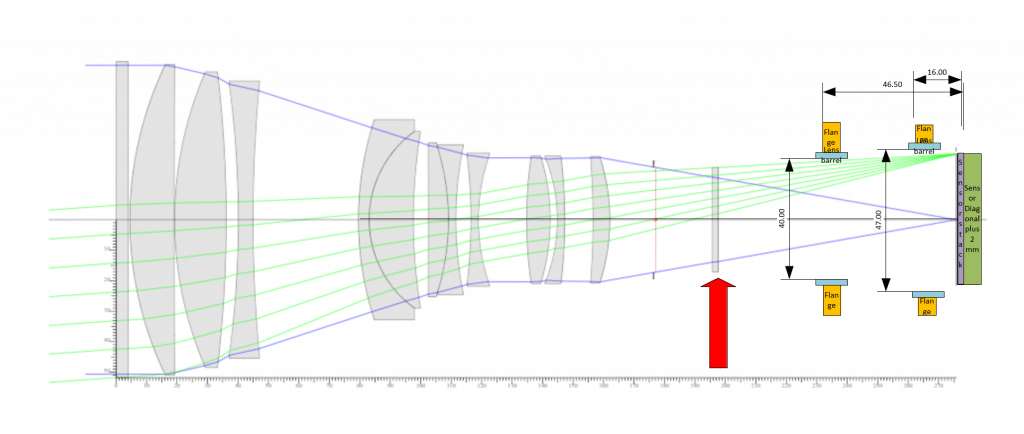
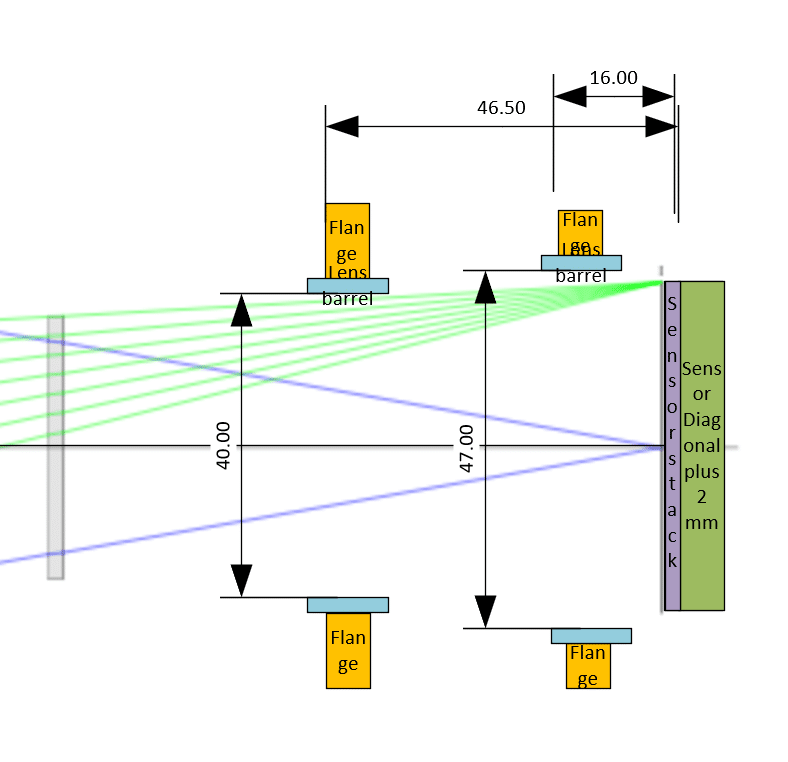
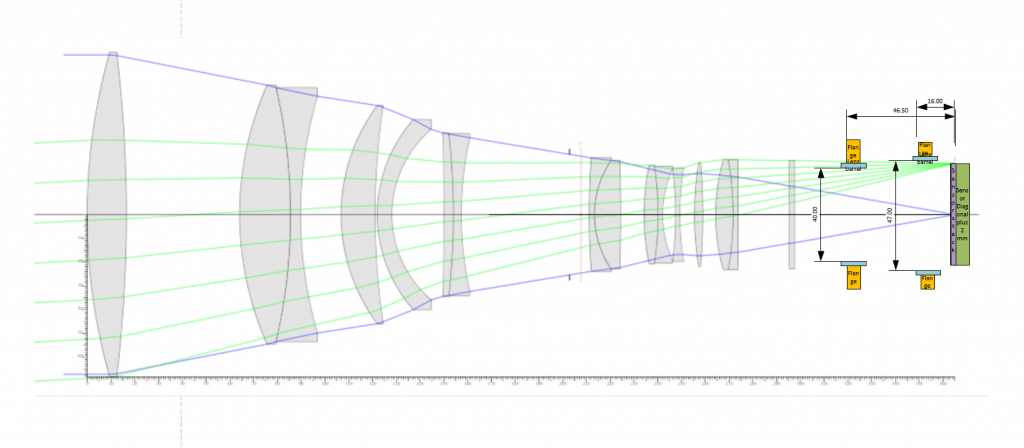
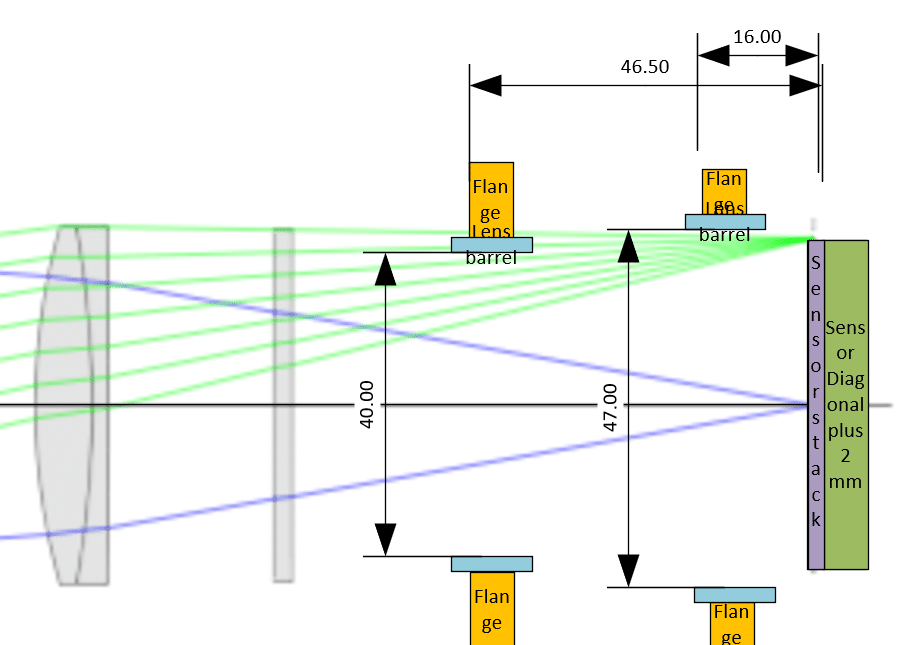
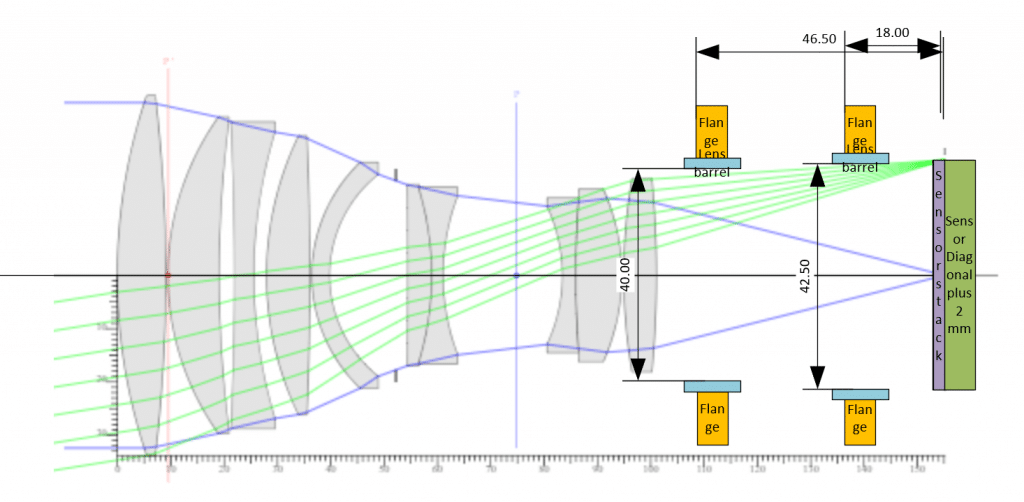
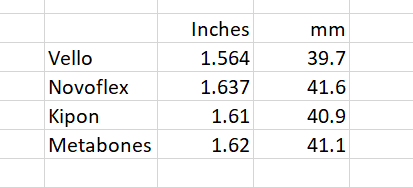
CarVac says
I’d always wondered why the superteles had so much vignetting.
It seems one reason is because they all have very distant entrance pupils.
Brandon Dube says
@CarVac
Partly because making dinner plate sized elements of very expensive and difficult to process optical materials is hard, so the F/#s are stretched by marketing somewhat, as is the focal length. Partly because achieving a reasonable telephoto ratio for compact size (and light weight) is difficult. Partly because crushing down an e.g. 125mm diameter beam into a < 40 mm diameter beam is no small order. Also partly because the demand for resolution outweighs the demand for even illumination.
Chris says
From the number of elements and the date of the teleconverter patent application, the 2.9/300 would be the AF-I Nikkor 300mm 1:2.8 D ED lens produced from 1992-1996.